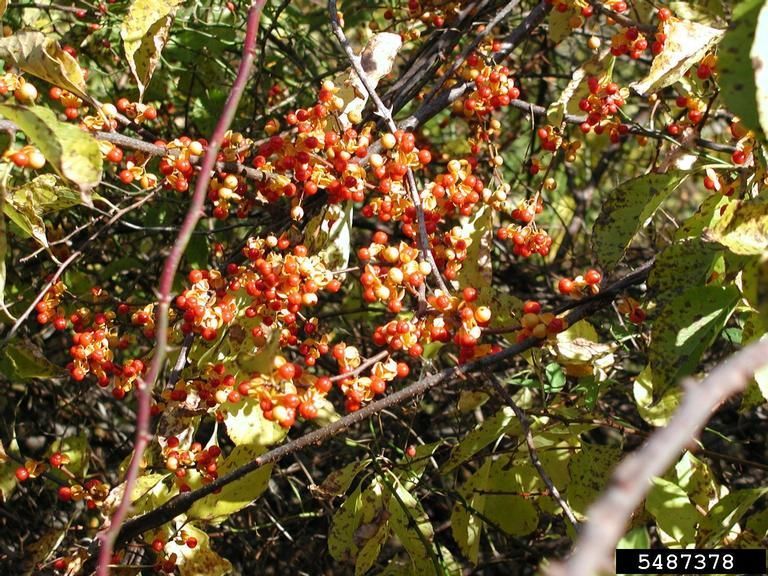Don’t Make a Rash Decision, Watch out for Poisonous Plants in the Winter
The thought of encountering a plant like poison ivy isn’t always on our minds when we’re recreating outdoors during the fall and winter months. I mean why would it? All the other plants are dormant or dead so why is a poisonous plant any different? The danger comes from the oil urushiol, which can remain on and in the plant during their dormant states. The big three we must worry about in Michigan are poison sumac, poison oak and poison ivy. Here are some helpful indicators of poisonous plants that you can watch out for in the fall and winter:
Poison Ivy
“Leaves of three, leave it be” is the common saying for poison ivy. Poison ivy will often look like a small shrub or a climbing/creeping vine. The three distinctive leaves will start to turn orange and red during the fall and can sometimes persist into the winter. In the winter the roots will grow hair-like structures to attach themselves to their surroundings. Poison Ivy also produces a waxy white berry that can be seen in the winter.
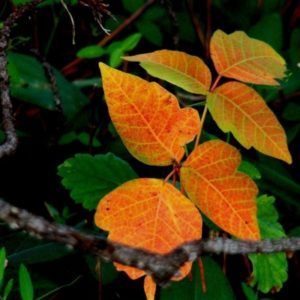
Poison Ivy leaves turning orange in the Fall. Photo taken by Doug Mcabee

Poison Ivy vines during the winter sprout hair like attachments.
Poison Oak
Poison oak, like poison ivy, produces three leaves that grow close together. The main difference between the two is that poison oak leaves are more rounded, similar to white oak leaves. Poison oak often looks like a small shrub or vine. In the fall, their leaves start to turn deep red but it is uncommon for the leaves to persist through the winter. Poison oak branches are cinnamon-colored and bare. Its stems are whip-like and climbing vines remain throughout winter. Poison oak also produces tan-colored berries that may persist into winter.
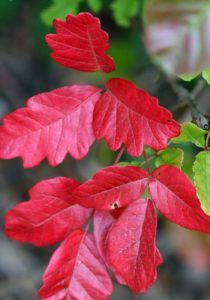
Poison oak leaves turn bright red in the fall. Photo by Philip Bouchard

Poison oak branches in the winter. They give off a cinnamon-brown color.
Poison Sumac
To identify poison sumac, look for small trees/multi-stemmed shrubs with reddish stems, 7-13 leaflets, and one unique leaflet pointing out at the end. During winter one of the best indicators is leftover clusters of white or light-green berries that sag downward on its branches. Poison sumac can often be found growing in wetland areas.
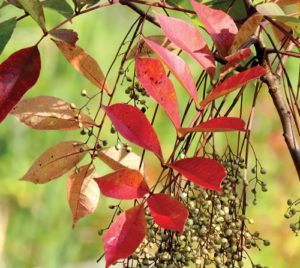
Poison sumac leaves turning red in the fall. Photo by Oakland County
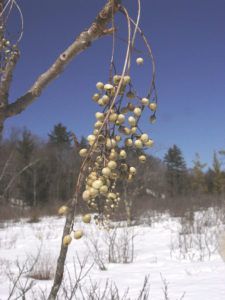
Poison sumac berries in the winter. Photo by Donald Cameron
The post Don’t Make a Rash Decision, Watch out for Poisonous Plants in the Winter appeared first on Michigan United Conservation Clubs.


